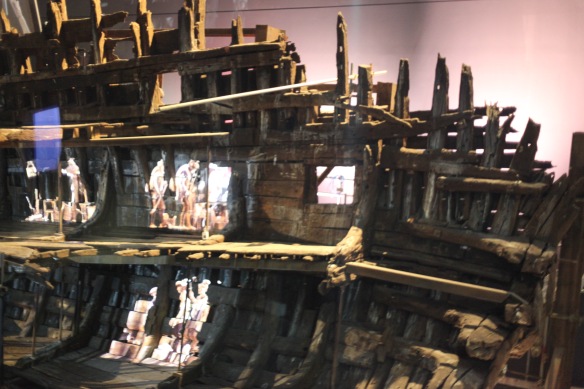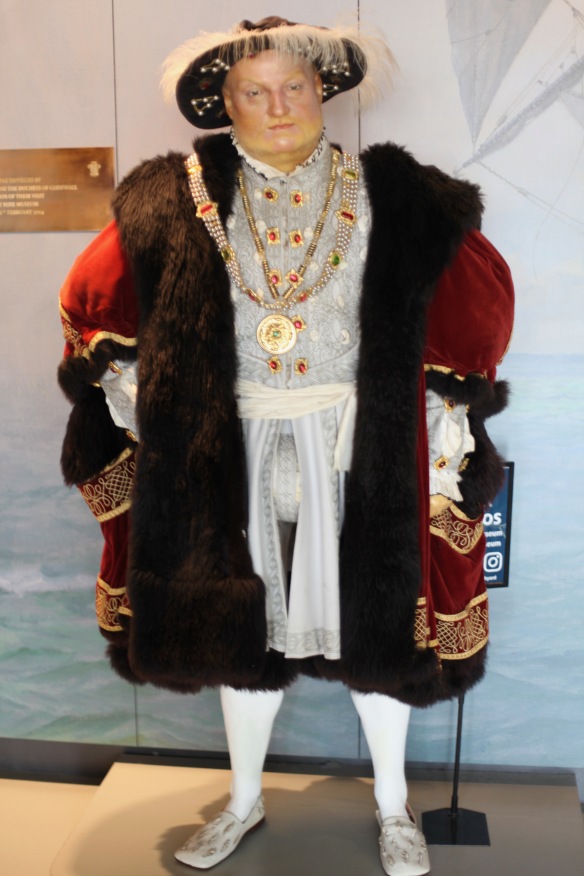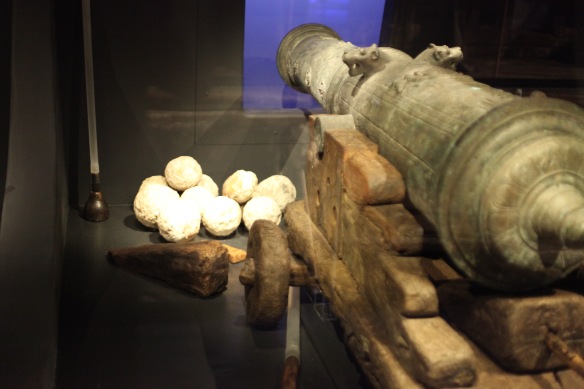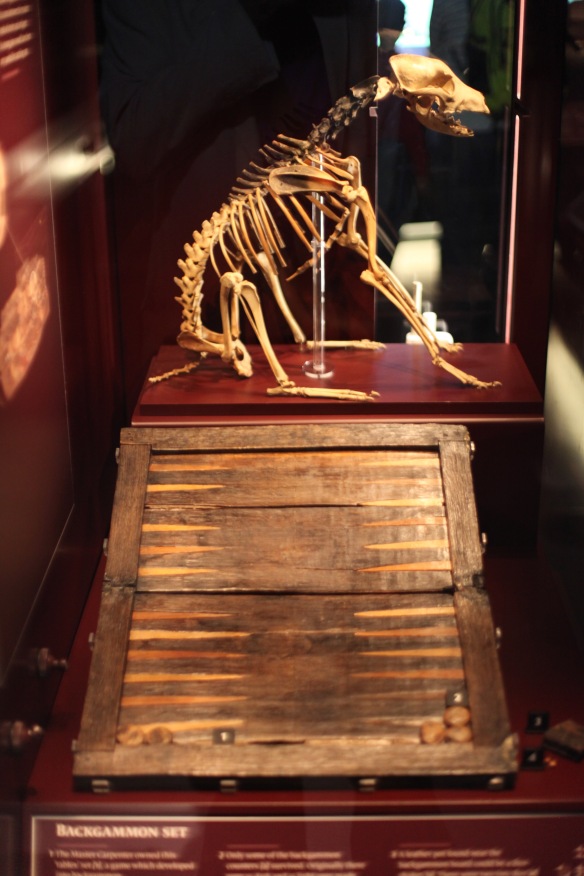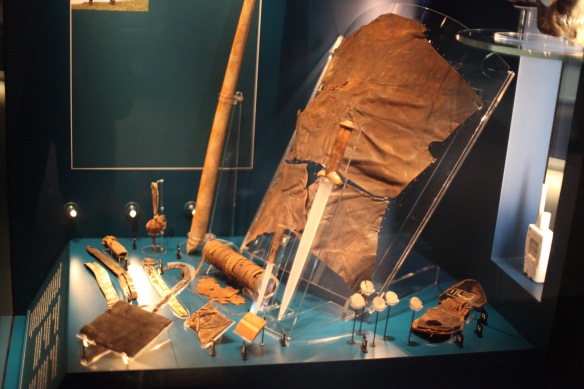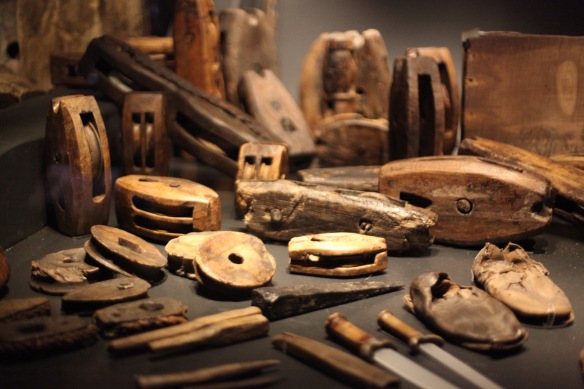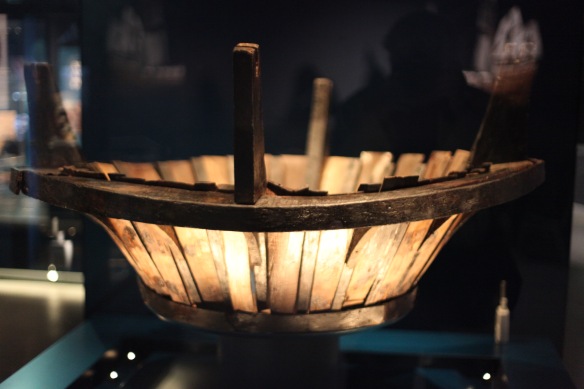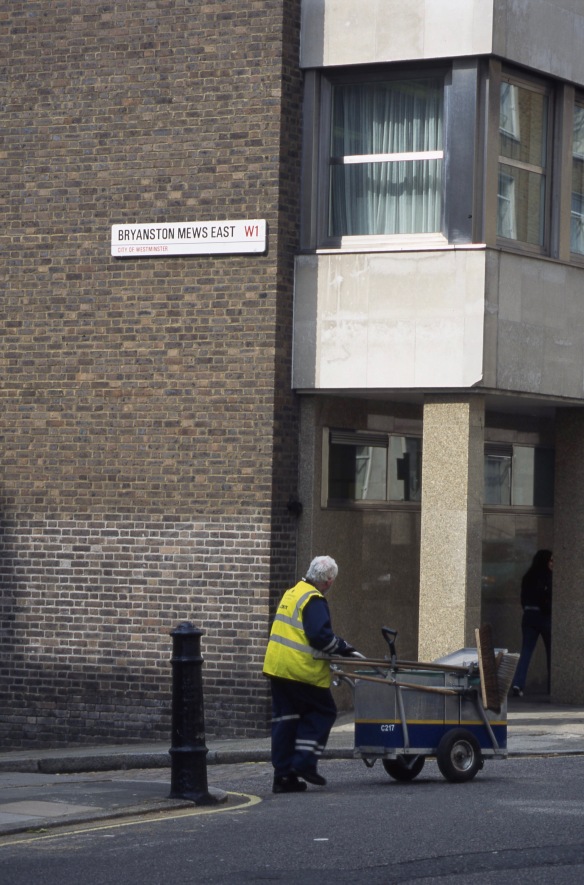CLICK ON IMAGES TO ENLARGE. REPEAT IF REQUIRED.
This morning Jackie drove me to New Milton for a visit to the bank, and back to Milford on Sea where we voted in the general election.
Three days of strong winds had wrought their usual havoc on the garden. After lunch we tied up and dead-headed roses; gathered broken branches and taller plants; and generally tidied up. The big beast has also returned, so Jackie blocked up the newest hole under the fence. All this came to a halt when heavy rain drove us inside.
I then worked on representing the tour of the Portsmouth Historic Dockyard that was our last family adventure before Sam, Holly, Malachi, and Orlaith set off for France.
On the approach to the waterfront, H.M.S. Warrior https://en.wikipedia.org/wiki/HMS_Warrior_(1860) comes into view. This vessel is a mere youngster compared with our main target of the afternoon.
We were advised that we would have insufficient time to view the two main attractions. Despite the figurehead of Lord Nelson from H.M.S. Trafalgar (1841) watching over
H.M.S. Victory, the latter vessel was the one we decided to forego.
We did, however, marvel at what we could see without going on board. Orlaith, sporting her new red plaster cast, perches on Sam’s shoulders, while Malachi, Holly, and Jackie stand beside them.
On 19th July 1545, 465 crew members from a complement of 500 drowned in The Solent. They were on board the Mary Rose which, after 34 years of active service, and just having fought off the French invasion fleet, sank with frightening rapidity and with no apparent cause. After years of searching, the wreck was discovered in 1971 and finally raised in 1982. Not until 2016 was the careful preservation work completed.
The museum we visited, by keeping the lighting low, discouraging flash photography, and with carefully controlled air conditioning, provides us with a wonderful experience of what life was like on board. One of the attendants told me that, on the upper levels, at that very moment engineers were working to revive the air conditioning that had developed a fault. I imagine the little modern gadgets visible in some of the cabinets must be monitors of some kind.
Suspended on the upper level hangs a model of the ship with an invitation to visitors to draw it. Almost everything else has been brought to the surface from the silt of The Solent.
What has been revealed of the original vessel is essentially a cross-section preserved by the mud and silt as it lay on its side. There are nine viewing galleries from which visitors may gaze upon skeletal decks first assembled almost 500 years ago. The first of these deck pictures shows scenes of sailors screened on the boards; in the background of the last are visitors looking down from various other levels.
We are greeted at the entrance by a very lifelike waxwork of the monarch himself.
The first exhibit is a wooden emblem of a Tudor rose, still decipherable after half a millennium beneath the sea.
A number of cannons and cannon balls are displayed as if piercing the decks to fire on the enemy.
A number of cabinets are dedicated to the barber surgeon, that essential crew member. We see his cabin furnishings,
and various items of equipment.
Bricks and a galvanised bath lie in a heap.
The skeleton of a dog and a backgammon board give a good touch of ordinary life.
Another waxwork is of an archer
remains of whose outfit lie in one cabinet,
and whose bows
and arrows appear in others.
This sturdy-looking gentleman trying out his pulling power blanched a bit when I asked him to repeat the effort for the camera. His arms were aching from his first two attempts.
Other weapons are the pikes and bills used to repel boarders.
A brick fireplace
was essential for the cook whose barrels, jugs, dishes, and other utensils were near at hand.
Many items of rigging were recovered,
as was the crow’s nest.
This is unlikely to be our only visit.
This evening, back in the 21st century, Jackie and I finished off the last of the Chinese takeaway meal.










